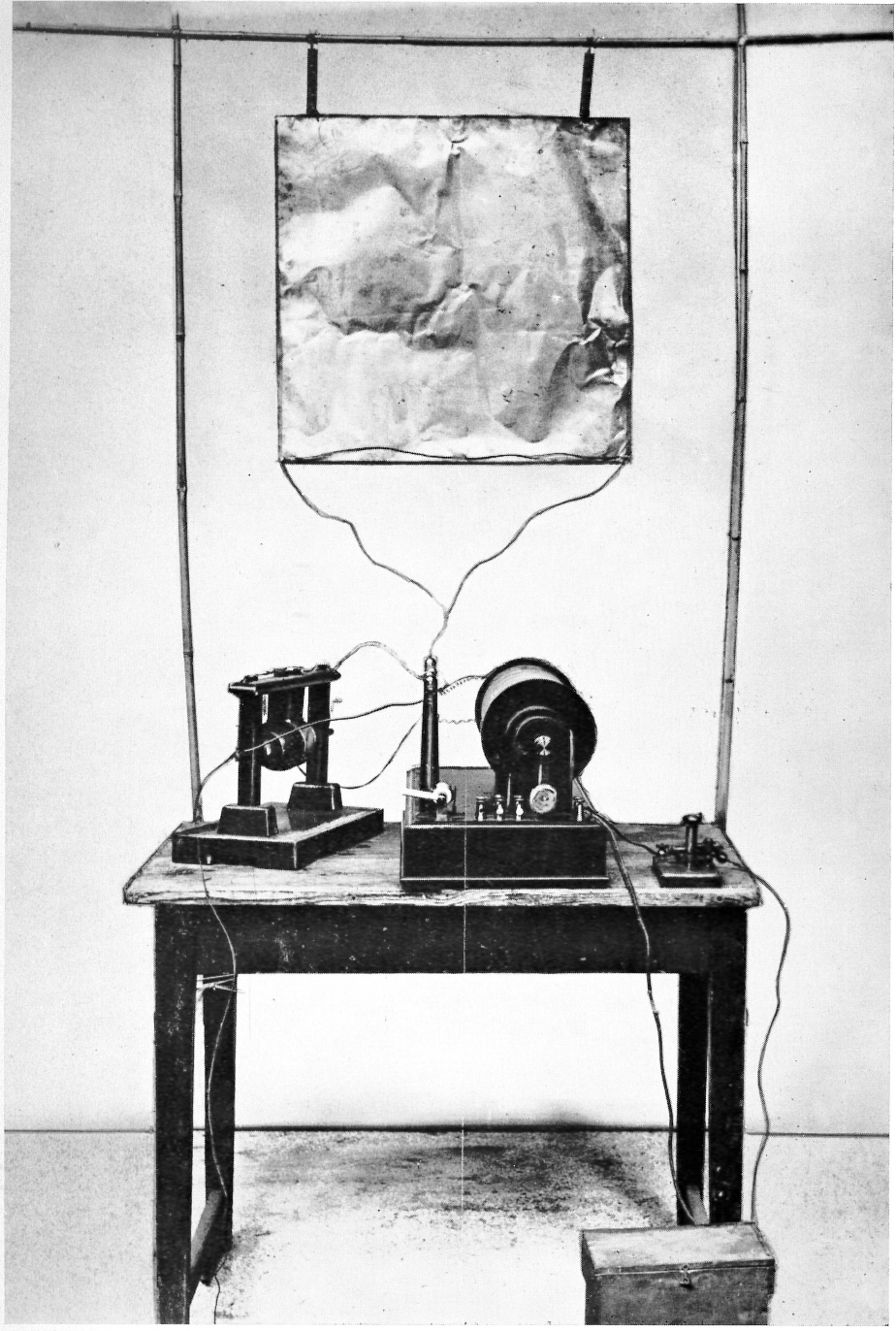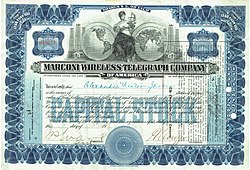Marconi's first radio transmitter
Autor/Urheber:
Guglielmo Marconi
Shortlink:
Quelle:
Größe:
924 x 1372 Pixel (428921 Bytes)
Beschreibung:
Recreation of the first radio transmitter with a monopole antenna, built by Guglielmo Marconi in August 1895 during his development of radio communication. It was a spark-gap transmitter which generated radio waves by an electric spark between two electrodes of a Righi spark gap (left, on table). The high voltage to produce the spark was generated by an induction coil (center) powered by a battery (on floor). A telegraph key (right, on table) in the primary circuit allowed the operator to switch the transmitter on and off rapidly, producing pulses of radio waves which spelled out text messages in Morse code. The unique feature of this transmitter is that it includes Marconi's invention of a monopole antenna. Marconi found that by connecting one side of the transmitter to an elevated copper sheet "capacity area" (top) and the other side to ground (earth), he could transmit longer distances than when using the previous dipole antennas invented by Hertz. This crucial innovation reduced the frequency of the radio waves, and radiated vertically polarized waves which had a greater range. With it Marconi achieved the first radio transmissions of practical distance, about 3 1/2 miles.
Kommentar zur Lizenz:
This 1926 issue of Radio Broadcast magazine would have the copyright renewed in 1954. Online page scans of the Catalog of Copyright Entries, published by the US Copyright Office can be found here. Search of the Renewals for Periodicals for 1953, 1954, and 1955 show no renewal entries for Radio Broadcast. Therefore the copyright was not renewed and it is in the public domain.
Lizenz:
Public domain
Credit:
Relevante Bilder
Relevante Artikel
Guglielmo MarconiGuglielmo Marconi, seit 1924 1. Marchese von Marconi, war ein italienischer Radio- und Amateurfunk-Pionier sowie Unternehmensgründer der Wireless Telegraph & Signal Company, die später zur Marconi Company wurde. Im Jahr 1909 bekam er für seine praktischen Arbeiten im Bereich der Funktelegrafie gemeinsam mit Ferdinand Braun, der die theoretischen Grundlagen dazu erarbeitete, den Nobelpreis für Physik. .. weiterlesen









